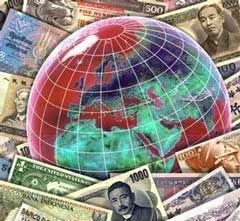
From 2010 to 2012, more expansions as well as mergers and acquisitions took place, and the emerging markets, especially the BRIC countries (Brazil, Russia, India and China), became hot ticket destinations for growth. Economic globalisation has realised its potential in the face of a crisis during the last three years. Countries in lieu of raw materials availability, labour costs and strategic geographic locations are being integrated into the global supply chain with more matured economies.
China still a force to be reckoned with?
The International Monetary Fund (IMF), in its economic forecast for emerging and developing economies said that amongst China’s strengths is its large population (as in the other cited emerging economies).
The greatness of China’s market has also been proven in figures with the IMF reporting that China’s GDP growth in 2010 was 10%, totalling US$5 billion, and climbed up to 11.79% in 2011 to US$6 billion. Its GDP is projected to even reach US$9 billion by 2015, a 10-12% growth per year between 2010 and 2015. This growth has billed China second to the US in terms of its economy, and the probability of becoming the largest economy in the world within the century.
Meanwhile, the passenger car components market, which is huge for plastics parts, is expected to hit the RMB85 billion mark by 2015, according to Research and Markets. China-based manufacturers of automotive plastics parts like NBHX, JNMPT, Shuanglin and Shunrong have upped their market share as well as technology.
It is these factors that are also a draw for companies like German machinery firm KraussMaffei. It has banked on the Chinese market with optimism by doubling its capacity in China as well as in Slovakia by 2013, with its facility in Haiyan to expand to 22,000 sq m and with more capacity of the Netstal and Krauss Maffei injection moulding machines for PET applications and machinery for reaction and extrusion technology.
Germany-based Evonik Industries also expanded its PMMA moulding compounds capacity by 40,000 tonnes/year at its Shanghai (China) and Taichung (Taiwan) plants in 2010.
Meanwhile, Henkel also established a new adhesives plant at the Shanghai Chemical Industry Park in China, to consolidate the company’s current production facilities here to produce additional capacities to achieve a full capacity output of 428,000 tonnes/year.
And also joining the roost of foreign manufacturers in China are US-based Davis-Standard that opened a new 4,300 sq m facility in Suzhou; Dutch firm DSM that set up its R&D centre in Shanghai; and Solvay/Rhodia with a compounding facility in Changshu. Ineos Phenol has tied up with China’s Sinopec to produce 400,000 tonnes of phenol and 250,000 tonnes of acetone in a new plant in China to start up in 2013. The facility will also include 550,000 tonnes/year of cumene capacity.
Global tyre makers have also settled in China with Pirelli, Continental, Michelin and Bridgestone, boosting production value in the country to as much as US$40.6 billion in 2011.
Volatile performance in India
India, another destination of choice, has grappled with high wage and labour shortages, tainting its manufacturing lustre. But it still has a considerably low labour cost, making it more plausible than China in this aspect alone. Furthermore, in contrast to most advanced economies that possess an ageing population, India has the world’s largest working-age population.
As such, tyre production in India is expected to grow by over 10% a year until 2017. Moreover, India has achieved a lucrative appeal as a market for vehicles. French tyre maker Michelin has a plant in SIPCOT Thervoy Kandigai Industrial Park in Thiruvallur with a production capacity of 2 million tyres/year; Bridgestone is starting up its second plant by 2013, with expected maximum capacity of 13,000 tyres/day. Malaysian technical and retreading compounds company, Goodway Integrated Industries, has also formed a partnership with India-based Indag Rubber for a rubber compounding and retreading venture.
For the plastics industry players, India has become new production home for the likes of Bayer MaterialScience (BMS), which has invested EUR20 million in a new aromatic and aliphatic polyisocyanate facility in Ankleshwar, which started operating in 2011.
AkzoNobel opened a 18 million l/year capacity coil and speciality plastic coatings plant on an exisiting company plant in Hoskote, near Bangalore.
Packaging firm Rexam has opened a new plant in Western India and expanded its existing plant in Bangalore to cater to the growing healthcare sector, but is downsizing its China-based packaging facility.
Earlier in 2012, Thailand PET manufacture Indorama Ventures entered into a joint venture with Indorama Synthetic India to build a US$700 million integrated purified terephthalic acid, PET resin and polyester staple fibre plant in India.
2013 a real test for Asian economies
Meanwhile, the Asian Development Bank (ADB) in its latest analysis said that China along with other major industrial economies will exhibit weak exports, weighing down on Asia’s economic growth in 2013.
According to ADB, the top five regional economies that include Indonesia, Singapore, Malaysia, Thailand and the Philippines will continue to grow at 5.8% in 2013 from 5.9% in 2012.
As well, emerging economies need redemption themselves. Whilst they buoyed up the matured economy countries during the tempest of the global crises and will continue to drive growth in years to come, problems of keeping the levels of growth up while dealing with other issues like inflation, unemployment, investment policies, protectionism and budget allocations are a major concern.
(PRA)








